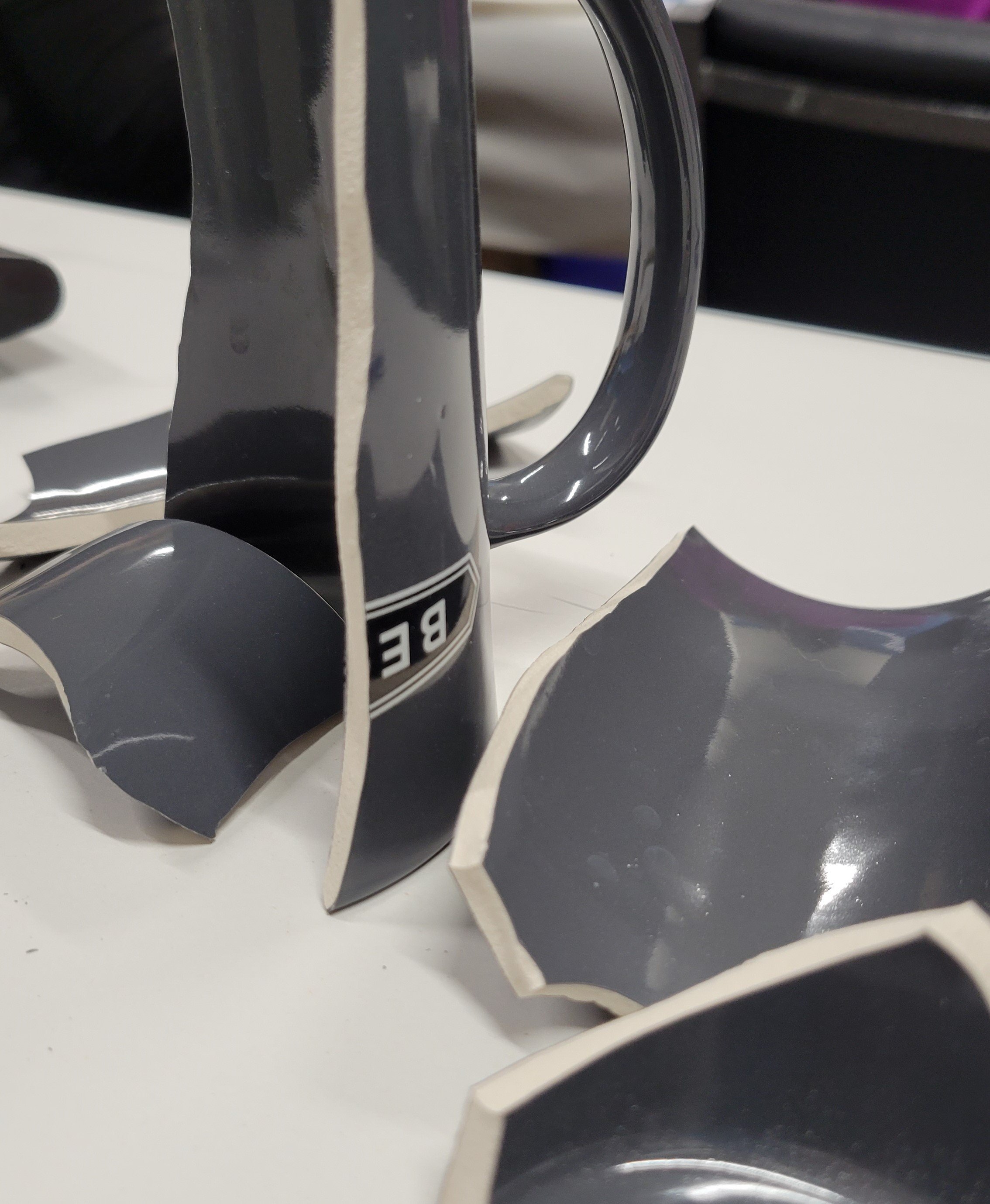The Healing of Kintsugi Art
Everything within me resisted.
The swing and slam of the hammer acheived the desired result ~ to restore something broken.
Everything pushes back at me.
“How can you do this?”
I lift the hammer above the plastic bag that held my chosen piece of pottery safely in its embrace. With hesitancy in knowing my action would forever change the purpose of the innocent and unaware mug, I slam the hammer down, breaking the contents of the bag into several pieces. The objective was to break it into only a few easy-to-glue-back pieces. Well, my piece had more pieces than I wanted to deal with for my first attempt at Kintsugi (pronounced: keen-sugee). The instructor showed us many samples of what can be done with broken china plates, bowls, mugs, and other pottery pieces. I chose to reassemble my broken pieces into an art form.
The process of Kintsugi begins with the breaking and then the mending. However, in real life, we are rarely the ones who intentionally break our own hearts. Instead, it is the hammer swing of the collective pain of living on a planet where death, losses, and trauma occur. When we find our lives shattered into more pieces than we wish to deal with, could this art form be a place to discover how healing works?
I looked at the collection of broken pieces to assess what would be the best option for me.
Insight #1. Do what works best for you and your broken heart. Too often we think we must follow someone else’s pattern. We forget that our relationship with those in our loss, trauma, and grief stories was completely unique. Therefore, our response to the pain and healing will reflect the relationship as well as our own strengths and weaknesses. We grieve and heal as uniquely as is our thumbprint.
I chose to turn the broken pieces of my mug into an art piece. First I edged each piece with gold-dusted resin. Then I configured them into something that could stand alone as a display of repurposed broken pieces. The process required patience and several ways of looking at what I had to work with.
Insight #2. Our pain and suffering have more than one perspective. Depending on our willingness to see ourselves from a few different angles, we can acknowledge that pain does not need to be my enemy, but rather an alarm to pay attention to our hurt. We can experiment with our grief to discover the best healing practices. Our loss does not need to define us, but rather our healing.
Insight # 3. Patience is required to grieve well. Our hearts do not heal magically. We are better served when we are intentional to grieve, exercise, put our pain on paper, and allow the feelings. These grief activities often interfere with daily activities. This is why it is so important to patiently offer grace to ourselves and permission to do things differently so we have the time to grieve.
If kintsugi taught me anything, it was that sometimes our broken hearts do not go back to the same way they were before our loss. We might become something completely different ~ Good ~ Beautiful ~ Useful ~ Contributing. Sadly for some, their lives take the path of unrestored brokenness. Their goal is to distract the pain rather than work with it for healing and wholeness. For others, their lives after loss might look remarkably similar to their former selves, with beautiful veins of gold that display the beauty and strength of their healed scars.
God has a faithfulness about Him as He interacts with our grief while turning our difficulties into something beautiful.
It is my life work to help clients find the best way to grieve, to become a beautifully restored person who has known pain and sorrow and has also known restoration and healing through God’s creative faithfulness. Art, of almost any form, is a good option to engage with during active grief. If you can take a class in Kintsugi, I enthusiastically recommend it. The process of interacting with the pieces is a powerful revealer of how you are interacting with your grief. At the same time be open to the Master Artist who is working with all your broken pieces to design a beautiful outcome.
There's no bad from which something good doesn't come.
Spanish Proverb: No hay mal que por bien no venga
We can also restore brokenness by putting our pain on paper. My book, Comfort for the Day, Living Through the Seasons of Grief is an excellent way to find beautiful healing, purpose, and restoration for our loss.
© Karen Nicola 2022


